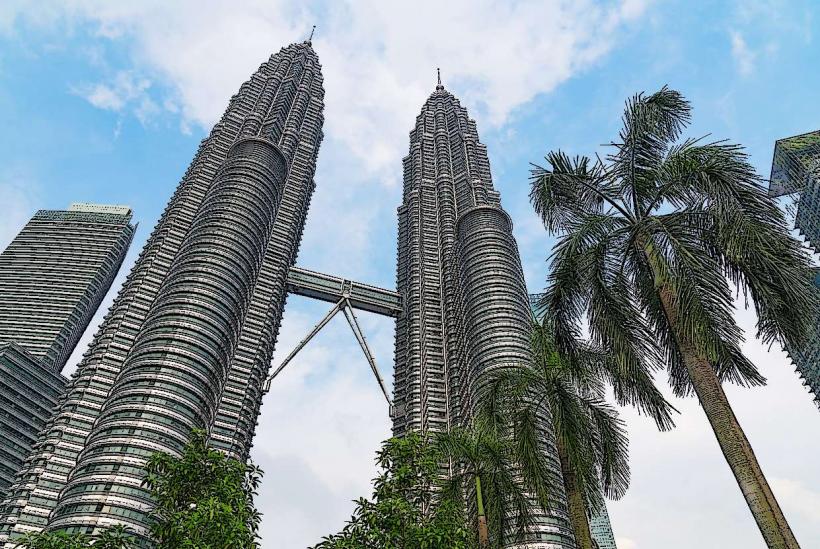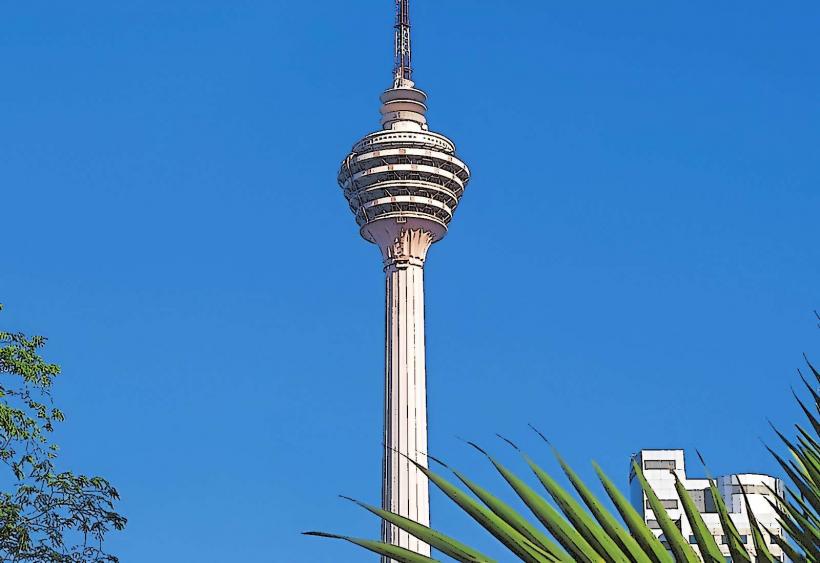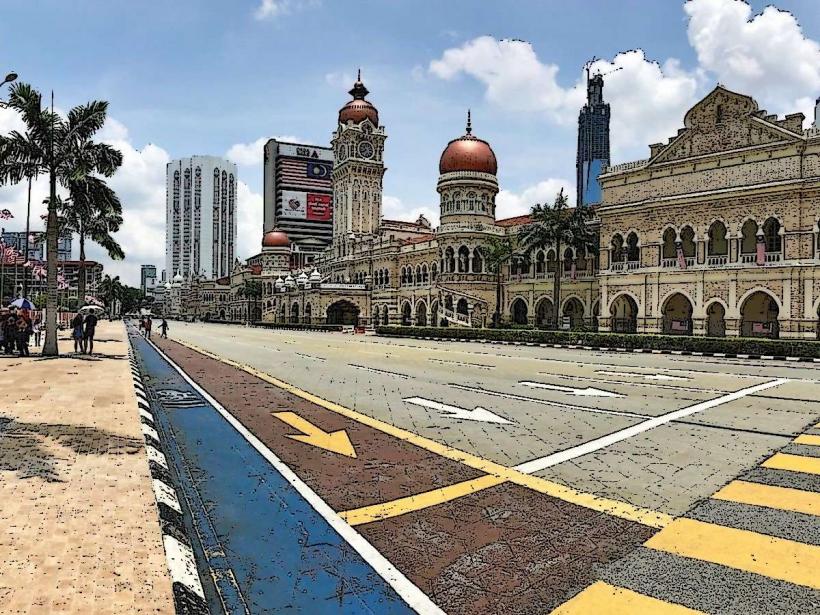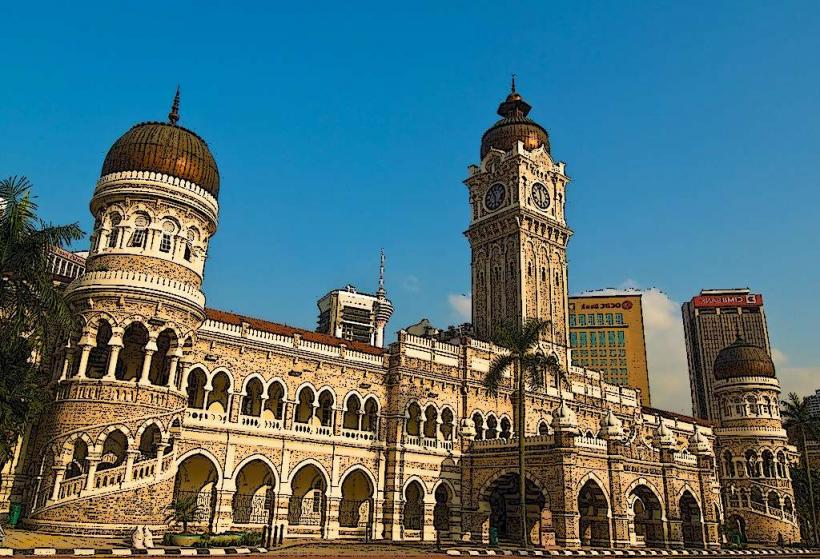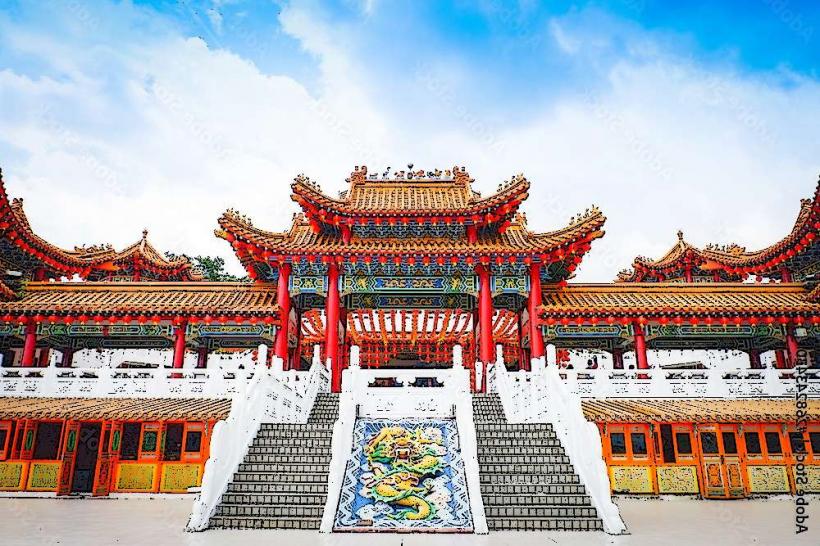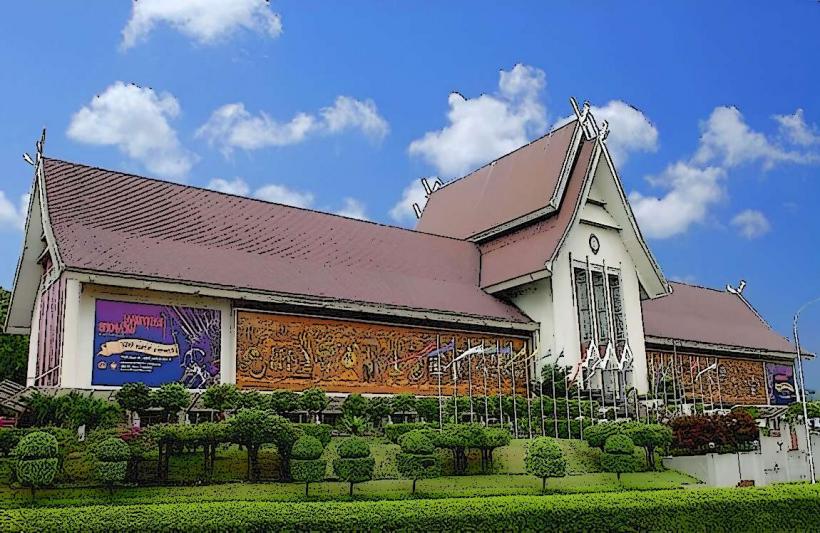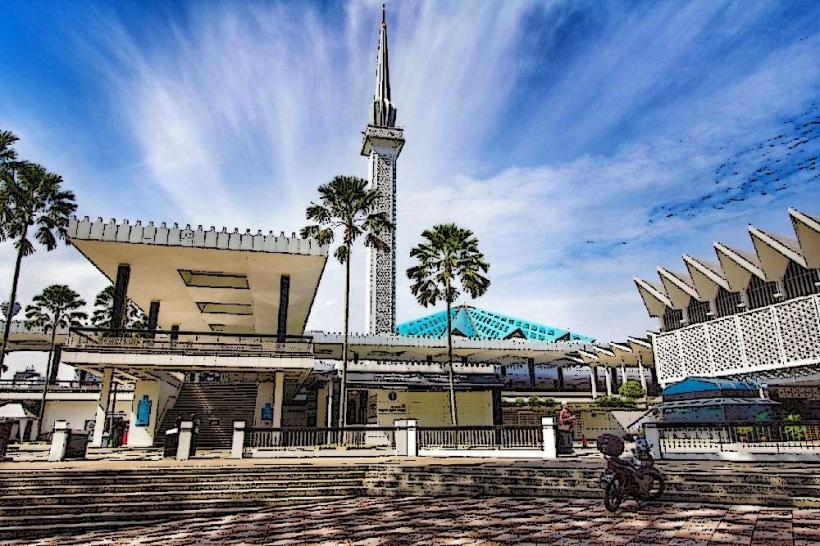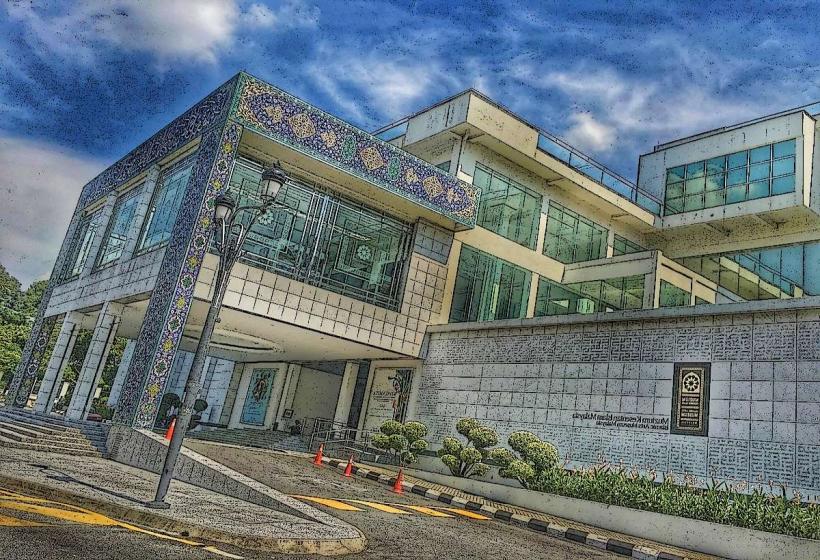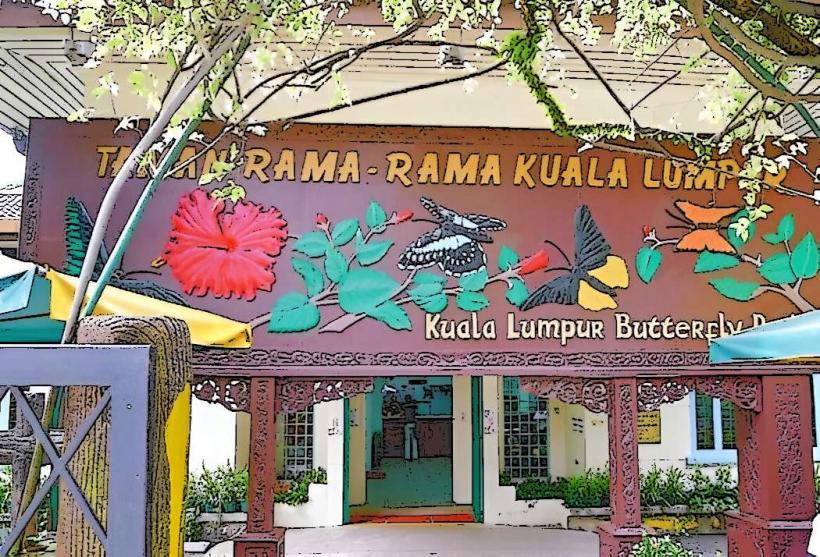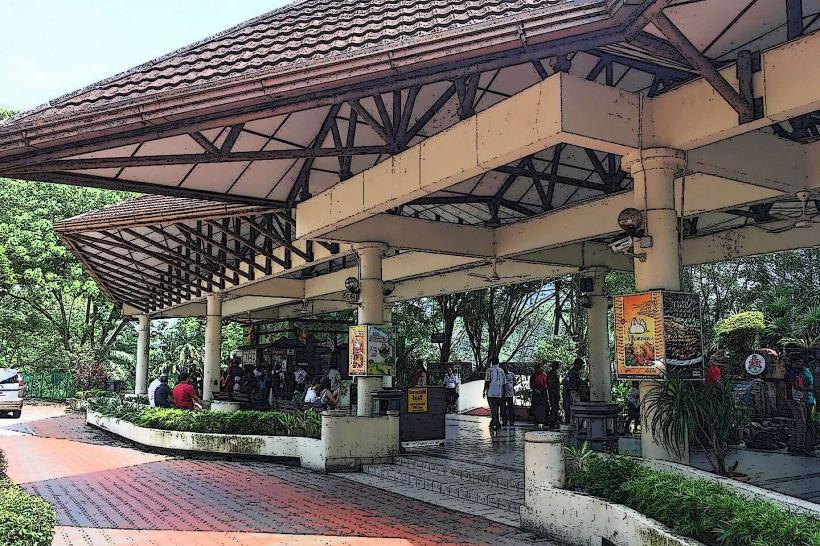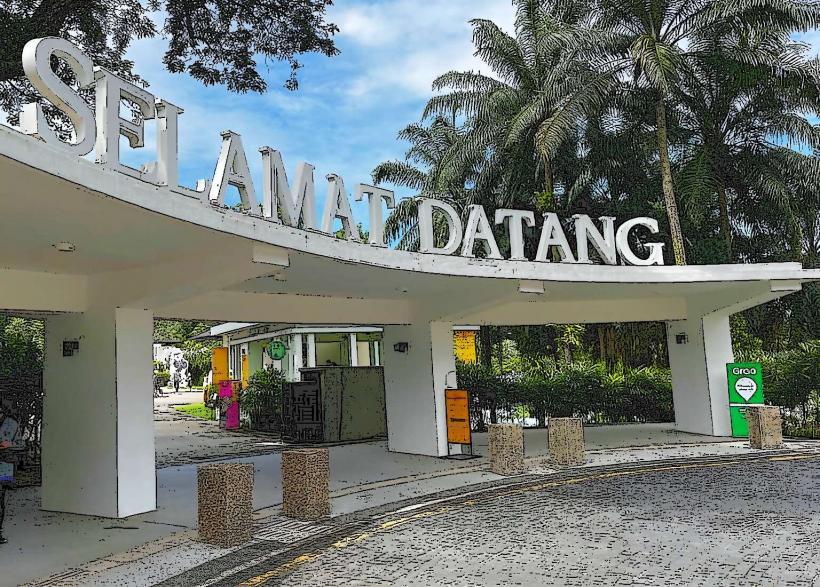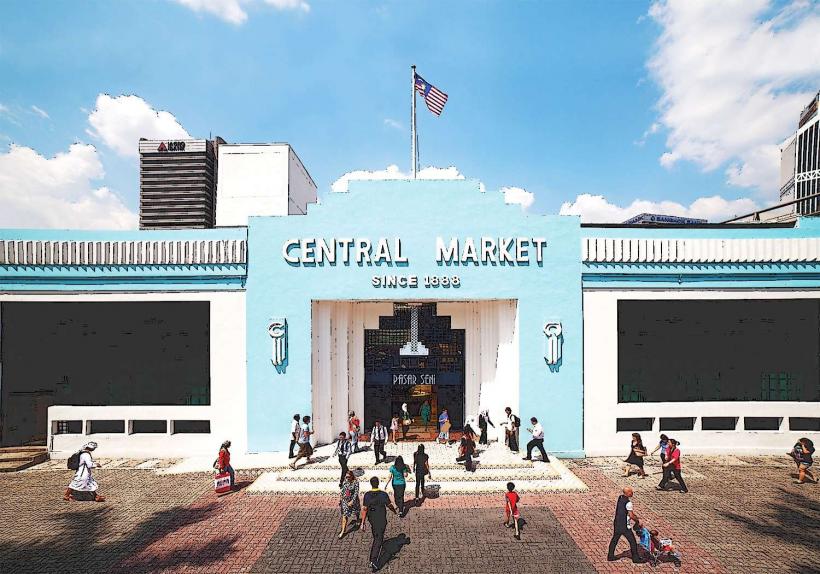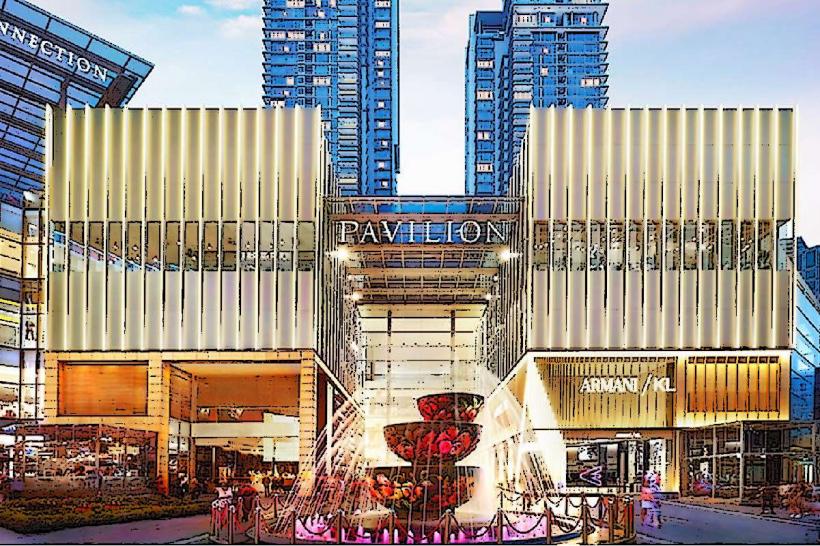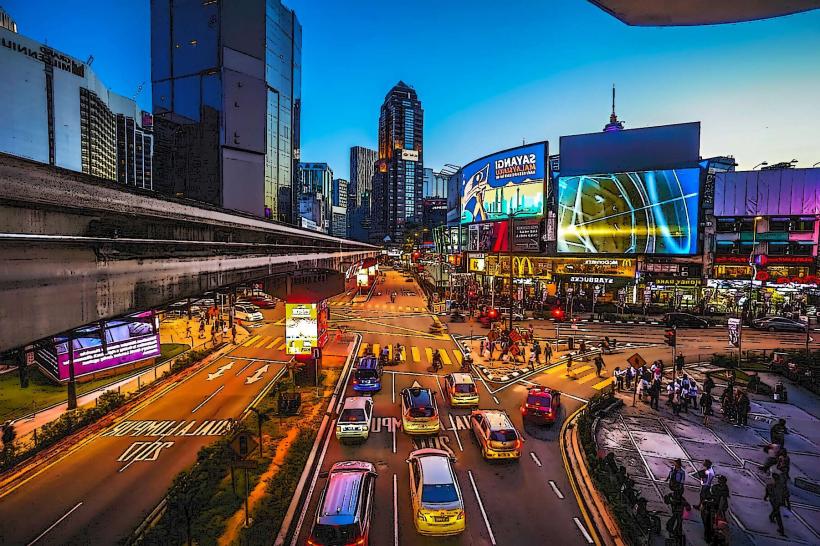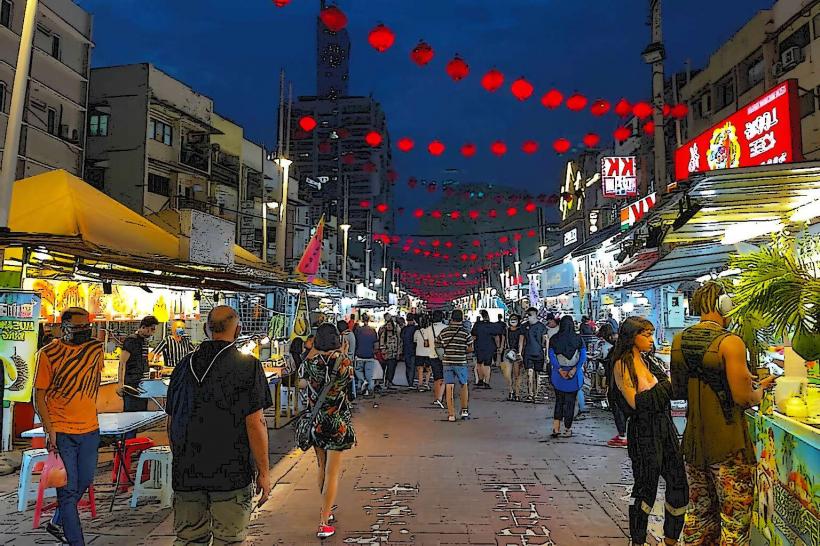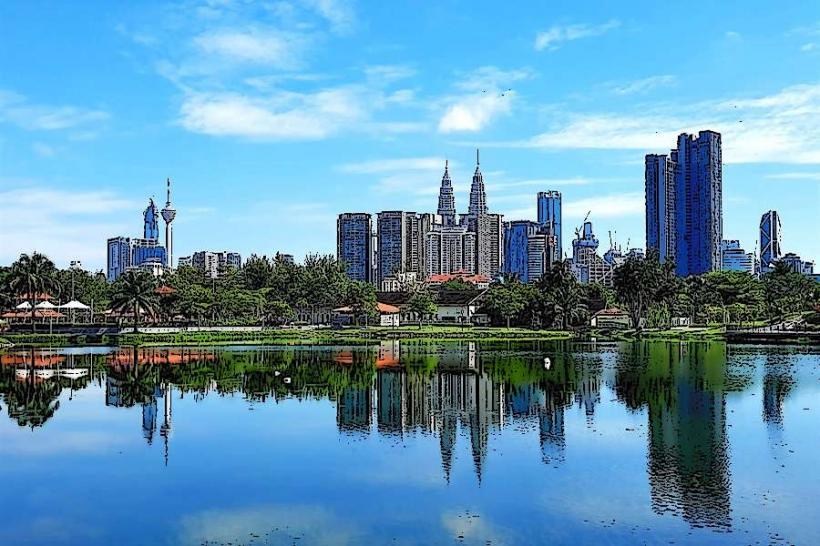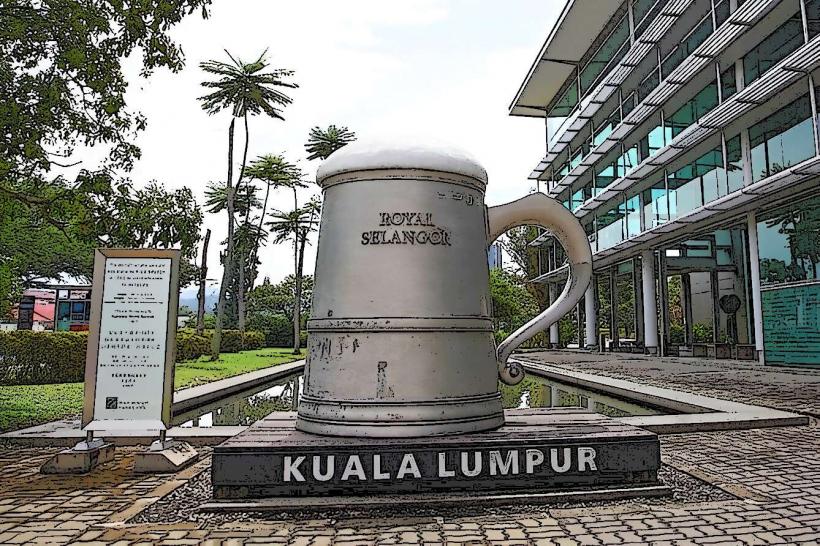Information
Landmark: Batu CavesCity: Kuala Lumpur
Country: Malaysia
Continent: Asia
Here’s a detailed guide to the Batu Caves, one of Malaysia's most visited and culturally significant landmarks:
1. Overview
The Batu Caves are a series of limestone caves and temples located in the Gombak district, about 13 kilometers north of Kuala Lumpur, Malaysia. The site is a prominent religious and cultural destination, especially for Hindus. It attracts both local devotees and international tourists due to its awe-inspiring natural beauty and cultural significance.
- Location: Gombak, Kuala Lumpur, Malaysia
- Cultural Significance: A major Hindu temple complex dedicated to Lord Murugan, the Hindu god of war
- Height: The limestone hill stands about 272 meters above sea level.
- Estimated Age of Caves: Around 400 million years
- Year Opened: The Batu Caves became a religious site in the 1850s.
2. Key Features
The Main Cave (Temple Cave)
- Temple Cave is the most famous and largest cave at Batu Caves, sitting at the top of a steep set of 272 steps.
- It is a Hindu temple dedicated to Lord Murugan and houses several shrines and statues.
- The cave is known for its natural formations, including stalactites and stalagmites, which add to the mystical ambiance.
Lord Murugan Statue
- At the base of the Batu Caves is a towering statue of Lord Murugan, the second-largest statue of a Hindu deity in the world.
- The statue stands 42.7 meters (140 feet) tall and is painted in gold, making it one of the most recognizable features of Batu Caves.
- It was unveiled in 2006 and symbolizes Lord Murugan’s significance in Hinduism.
The 272 Steps
- To reach the Temple Cave, visitors must climb a steep staircase of 272 steps, which lead up to the entrance of the main cave.
- Along the way, visitors can enjoy a panoramic view of the surrounding area.
Dark Cave
- The Dark Cave is a conservation site that allows guided tours into its interior.
- It is home to rare species of flora and fauna, including the unique cave-dwelling insects, bats, and other endemic species.
- The tour also provides an opportunity to learn about cave geology and environmental conservation.
Other Caves
- Ramayana Cave: A cave showcasing scenes from the Ramayana, the ancient Indian epic. It features a series of murals and statues depicting the story of Lord Rama.
- Art Gallery Cave: A cave that houses Hindu religious artwork, including paintings, sculptures, and images of Hindu gods.
3. Activities and Experiences
Climbing the 272 Steps
- The climb up to the Temple Cave is a major activity and can take anywhere from 15 to 30 minutes, depending on the pace. It is a rewarding experience, offering views of the surrounding area.
- Visitors often stop along the way to rest and take photos of the surroundings, which include monkeys that live in the area.
Exploring the Caves
- The Temple Cave is an active place of worship, especially during religious festivals like Thaipusam, when tens of thousands of devotees visit Batu Caves to seek blessings.
- Dark Cave tours provide an educational experience, as guides explain the cave's natural history and biodiversity.
- The Art Gallery Cave and Ramayana Cave are great for those interested in Hindu mythology and religious artwork.
Monkey Watching
- Batu Caves is home to a large population of long-tailed macaques, and visitors can interact with these monkeys, though they should be cautious as they can be mischievous and aggressive, particularly around food.
Photography and Scenic Views
- The view from the top of the Batu Caves is spectacular, and visitors often take photographs of the city and the surrounding landscape.
- The statue of Lord Murugan, especially when illuminated in the evening, is a stunning subject for photography.
4. Religious Significance
- Batu Caves is a major pilgrimage site for Hindus, especially during the annual Thaipusam festival.
- Thaipusam is celebrated in honor of Lord Murugan, where devotees undertake acts of penance, including carrying kavadis (decorated structures that are attached to the body through hooks and pierced through the skin).
- The caves are dedicated to Lord Murugan, and the temple complex inside the caves is considered an important Hindu shrine.
5. Interesting Facts
Ancient Origins:
The Batu Caves have been used as a place of worship for over 150 years. However, the caves themselves are much older, with geological formations dating back more than 400 million years.
Lord Murugan Statue:
The Lord Murugan statue is made of 1550 cubic meters of concrete and weighs about 250 tons.
Macaque Monkeys:
The area around Batu Caves is home to a large population of macaques, which are commonly seen around the steps and temple area.
Annual Pilgrimage:
Thaipusam, celebrated in January or February, attracts over a million devotees to Batu Caves, making it one of the largest Hindu celebrations outside of India.
Unique Natural Features:
The limestone hills that house Batu Caves are over 400 million years old, and the caves themselves contain unique stalactites and stalagmites formations.
6. Accessibility
Getting There
- Public Transport:
- Batu Caves is accessible via the KTM Komuter (Kuala Lumpur’s commuter train system) KTM Batu Caves Line, which stops directly at Batu Caves station.
- Buses from KL Sentral and other parts of the city also provide transport to the site.
- Taxis and ride-hailing services like Grab are also available to Batu Caves.
- By Car:
- The caves are about a 15-20 minute drive from central Kuala Lumpur. There is parking available at the base of the caves.
Opening Hours
- The Batu Caves are open daily from 6:00 AM to 9:00 PM, with the temple cave closing earlier for evening worship.
- The Dark Cave tours typically operate from 9:00 AM to 6:00 PM (last tour at 5:30 PM).
Ticket Information
- Temple Cave: Free admission, though donations are encouraged.
- Dark Cave: Entrance fee for guided tours (typically around RM 35–45 for adults).
- Art Gallery Cave and Ramayana Cave: Admission is around RM 5 per person.
7. Nearby Attractions
- Kuala Lumpur City Centre (KLCC): Home to the Petronas Twin Towers and KLCC Park.
- National Zoo of Malaysia (Zoo Negara): Located nearby, Zoo Negara offers an exciting family-friendly experience.
- Gombak River: The river area near Batu Caves offers scenic views and places for relaxation.
- Kuala Lumpur Butterfly Park: Located a short drive from Batu Caves, this park showcases Malaysia’s vibrant butterfly species.
The Batu Caves offer a unique mix of natural beauty, cultural richness, and religious significance, making it an essential destination for visitors to Kuala Lumpur. Whether you're interested in exploring the caves, taking in the views, or experiencing the vibrant religious festivals, Batu Caves is a place full of history and wonder.

